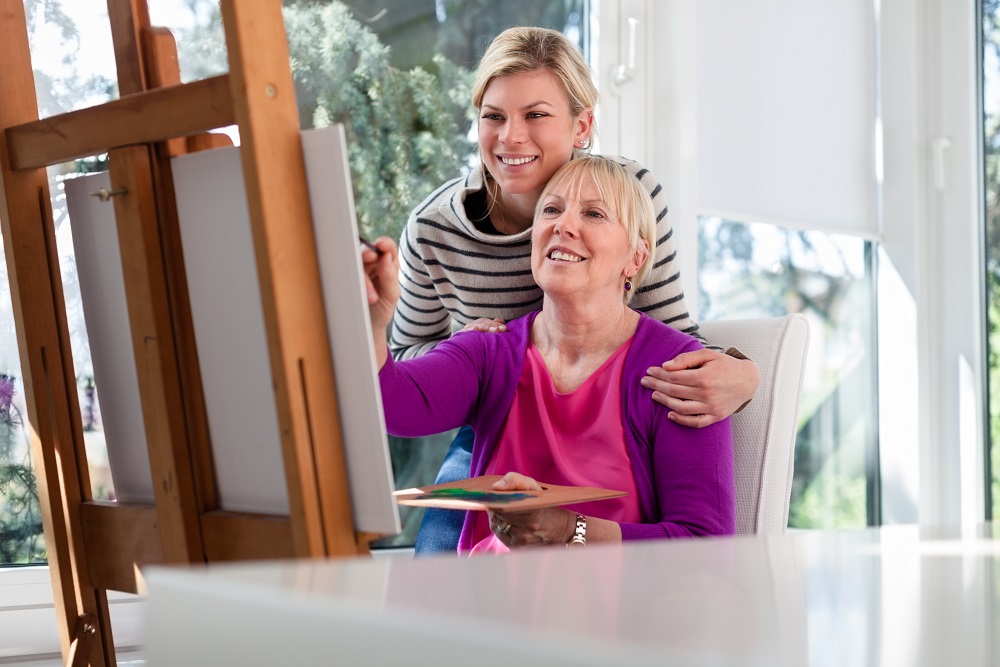Shipping Grandma’s Artwork
Shipping artwork requires both thought and technique and a company that specializes in elderly shipping. Preparing artwork for shipment can often times be a challenge. Use this time to bond with your Grandma and make the process fun by turning it into a moving project. Gather all artwork, prints, and photographs that Grandma needs to ship and start wrapping!

Photo Credit| Deposit Photos | @ diego_cervo
Start your project as you would any project by determining your goals. The first and most important goal is safety. Spend time wrapping and protecting your artwork to avoid any damage during shipment. A smaller, less important goal is price efficiency. To some this may be more important, but keep in mind the heavier the box, the more you will pay to ship.
The next step in your artwork moving project is to make a list of materials needed.
Materials
• T-Square
• Tape gun
• Tape measure
• Box cutter/knife
• Black marker
• Box sixer
• Shipping scale
• Plastic palette wrap
• Cardboard pads
• (Large or Small) Bubble wrap – do not use packing peanuts
• Fragile Stickers
• Packing Tape – use 3 .5 millimeter thick and 2” wide tape
Boxes – A Telescoping Mirror Box is your best option, sizes to consider are the following:
o 28” x 4” x 24”
o 37” x 4 3/8” x 30”
o 36” x 6” x 42”
Now that the materials you need, you can start your project.
Step 1 – Determine box size and material. Measure your artwork dimensions, including thickness. This will help you figure out how much of each material listed above you will need as well as the appropriate box size.
Example: If you have an artwork that measures 18” x 1.5” x 18” you should use a 22” x 5.5” x 22’ box, leaving plenty of room for the wrapped artwork.
Step 2- Wrap artwork with the plastic wrap. Flip the artwork over (be careful to lay artwork on a surface that is smooth and clean) and start wrapping on the back. Cut slips in the plastic to allow the artwork to ‘breath.’ Wrapping in plastic wrap creates a ‘skin’ for the artwork – the first level of protection.
Step 3 – Cut cardboard to fit around the artwork. This is the second level of protection. Cut each piece of cardboard using the supplies listed above. The cardboard should be the exact size of the artwork. After the pieces have been created, place them around the artwork and pinch the end of the cardboard for additional shock absorption.
Step 4 – Layer the artwork in bubble wrap. Bubble wrap works well for artwork – this is the third layer of protection and the strongest. Large bubble wrap the best choice due to the additional cushion they provide. Bubble wrap can also be used to fill gaps between the inner and outer cardboard.
**Please note, for steps 2 through 4 you will need to tape protective layers together in order to keep them from shifting.
Step 5 – Place the wrapped artwork in the outer, final box. The artwork should fit snug in the box with little to no wiggle room. If there is space, fill it with bubble wrap.
Step 6 – Tape the box. This may sound simple, but the more tape the better. Packing tape is stronger and will hold better. Place packing tape along all of the seams of the boxes as well as wrapping it around the most outer box to secure it shut.
Step 7 – Write Fragile on the box. It is important to place a Fragile Sticker on the box and/or write fragile largely on multiple sides of the box so that extra caution will be used when transporting the artwork.
Once you have properly packed Grandma’s artwork, let us handle the rest! Moves for Seniors will provide the specialty shipping services you need to make sure Grandma’s artwork arrives safely to its destination. Contact us for a free consultation or give us a call at (800) 227-0515.